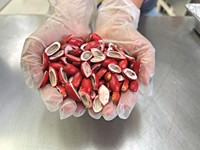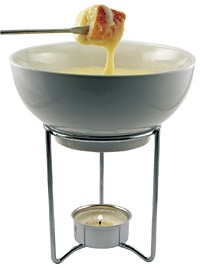Advertisement
Grab your lab coat. Let's get started
Welcome!
Welcome!
Create an account below to get 6 C&EN articles per month, receive newsletters and more - all free.
It seems this is your first time logging in online. Please enter the following information to continue.
As an ACS member you automatically get access to this site. All we need is few more details to create your reading experience.
Not you? Sign in with a different account.
Not you? Sign in with a different account.
ERROR 1
ERROR 1
ERROR 2
ERROR 2
ERROR 2
ERROR 2
ERROR 2
Password and Confirm password must match.
If you have an ACS member number, please enter it here so we can link this account to your membership. (optional)
ERROR 2
ACS values your privacy. By submitting your information, you are gaining access to C&EN and subscribing to our weekly newsletter. We use the information you provide to make your reading experience better, and we will never sell your data to third party members.
Environment
Kava
Traditional Polynesian beverage relaxes some, but its appearance and bitter taste gross out others
by Rachel Sheremeta Pepling
November 14, 2005
| A version of this story appeared in
Volume 83, Issue 46

During a trip last year to Hawaii's Big Island, I ventured to the Kanaka Kava outdoor caf,eager to try the famously relaxing cup of kava. I contemplated a murky liquid served to me in a leaky coconut cup. The smell wasn't appealing either. My far braver husband downed half his cup before I even took a sip. A dive guide had warned me that it would taste bad, so I braced myself. But I didn't expect it to be so bitter that it made every one of my hairs stand on end. And I certainly didn't expect it to numb my tongue!
Such was my first—and, quite possibly, my last—experience with kava. I never thought a relaxant could make me so tense. What exactly is this turpentine-smelling, bitter-tasting, muddy-water drink?
Kava, found throughout the South Pacific, is the common name of the plant Piper methysticum and a member of the pepper family. In Hawaii, it's called 'awa. Fijians know it as yaqona. Samoans call it ava. The term kava is taken from the Tongans. In all of these cultures, kava has been used for ceremonial and social occasions. Essentially, the drink is ground-up kava root strained with fresh water and served in a coconut shell cup.
Today, kava is gaining popularity as a natural relaxant. The active compounds responsible for the relaxing effect of kava are called kavalactones. These compounds, particularly kavain, affect the section of the brain that regulates fear and anxiety. Yadhu N. Singh, pharmaceutical sciences professor at South Dakota University, Brookings, and author of Kava: From Ethnology to Ethnopharmacology, says kavalactones affect the brain through a variety of mechanisms, such as by blocking sodium or calcium channels and by activating  -aminobutyric acid receptors.
-aminobutyric acid receptors.
After returning to the mainland, I shared my inaugural kava experience with H. C. (Skip) Bittenbender, a coffee, kava, and cacao researcher at the University of Hawaii, Manoa. Bittenbender says kava is a high-volume drinking operation. A couple of cups are needed to feel the effects of the kavalactones. He has heard that after about six to eight cups, people find they have difficulty standing because their muscles are so relaxed.
Bittenbender himself frequently partakes in a kava break between 3 and 4 in the afternoon. He claims the drink relaxes him but allows him to concentrate without being distracted by outside thoughts. He'll often imbibe before sitting down to read Ph.D. dissertations.
One of the main benefits of the drink is that it's not addictive. The effects generally last only a few hours. Though relatively free of side effects (excessive use can lead to a dry, scaly skin condition called kava dermopathy), the drink is not without controversy.
A 2001 study in Germany linked the use of kava supplements to some cases of liver failure. Subsequently, kava came under scrutiny and its sale was banned in some countries, including Germany, France, Switzerland, Canada, and South Africa. In 2002, the U.S. Food & Drug Administration issued a consumer advisory about kava-containing dietary supplements.
 Recent research, however, indicates that the danger may lurk in dietary capsules—the common form of kava in Europe—not the drink. Chung-Shih Tang, a colleague of Bittenbender's at the University of Hawaii, published a study last year indicating that the alkaloid pipermethystine may actually be the liver-damaging culprit instead of the kavalactones (Toxicol. Sci. 2004, 79, 106).
Recent research, however, indicates that the danger may lurk in dietary capsules—the common form of kava in Europe—not the drink. Chung-Shih Tang, a colleague of Bittenbender's at the University of Hawaii, published a study last year indicating that the alkaloid pipermethystine may actually be the liver-damaging culprit instead of the kavalactones (Toxicol. Sci. 2004, 79, 106).
Pipermethystine is found only in the aboveground parts of the kava plant, such as the stems and leaves. It is not found in the root, which is the only part of the plant traditionally used in making the drink. Tang thinks it's possible that some of the aboveground parts make their way into kava capsules during processing.
In response to new research such as Tang's, some countries are reviewing their bans and restrictions. The National Assembly for Wales in the U.K. revoked its 2002 ban on kava in November 2003. Last January, the U.K.'s Medicines & Healthcare Products Regulatory Agency began reviewing the toxicity of kava and evaluating current control policies for all of the U.K. And according to the International Kava Executive Council in Berlin, Germany has repealed its ban and is reevaluating its kava policies.
Because of the kava controversy, there are at present only a few options for trying the bitter, nonnarcotic relaxant. Kava bars are not plentiful in the continental U.S., so now you have an excuse to travel to Hawaii, Fiji, or Vanuatu. If you're not planning to travel anytime soon, several businesses, including Kanaka Kava, sell frozen and dried varieties over the Internet. Kanaka Kava even sells a kit containing kava pulp, a strainer bag, and a coconut shell cup.
If the bitter taste is a deterrent to trying the elixir, flavor chemists tell Bittenbender that the bitterness can be removed. But he compares kava to wines. Just as wines vary in degrees of dryness and sweetness, kava comes in different degrees of bitterness. Removing the compounds that make it bitter would make every variety of kava taste the same.
Instead, Bittenbender suggests the traditional Hawaiian way of getting around the bitterness: fruit chasers.








Join the conversation
Contact the reporter
Submit a Letter to the Editor for publication
Engage with us on Twitter